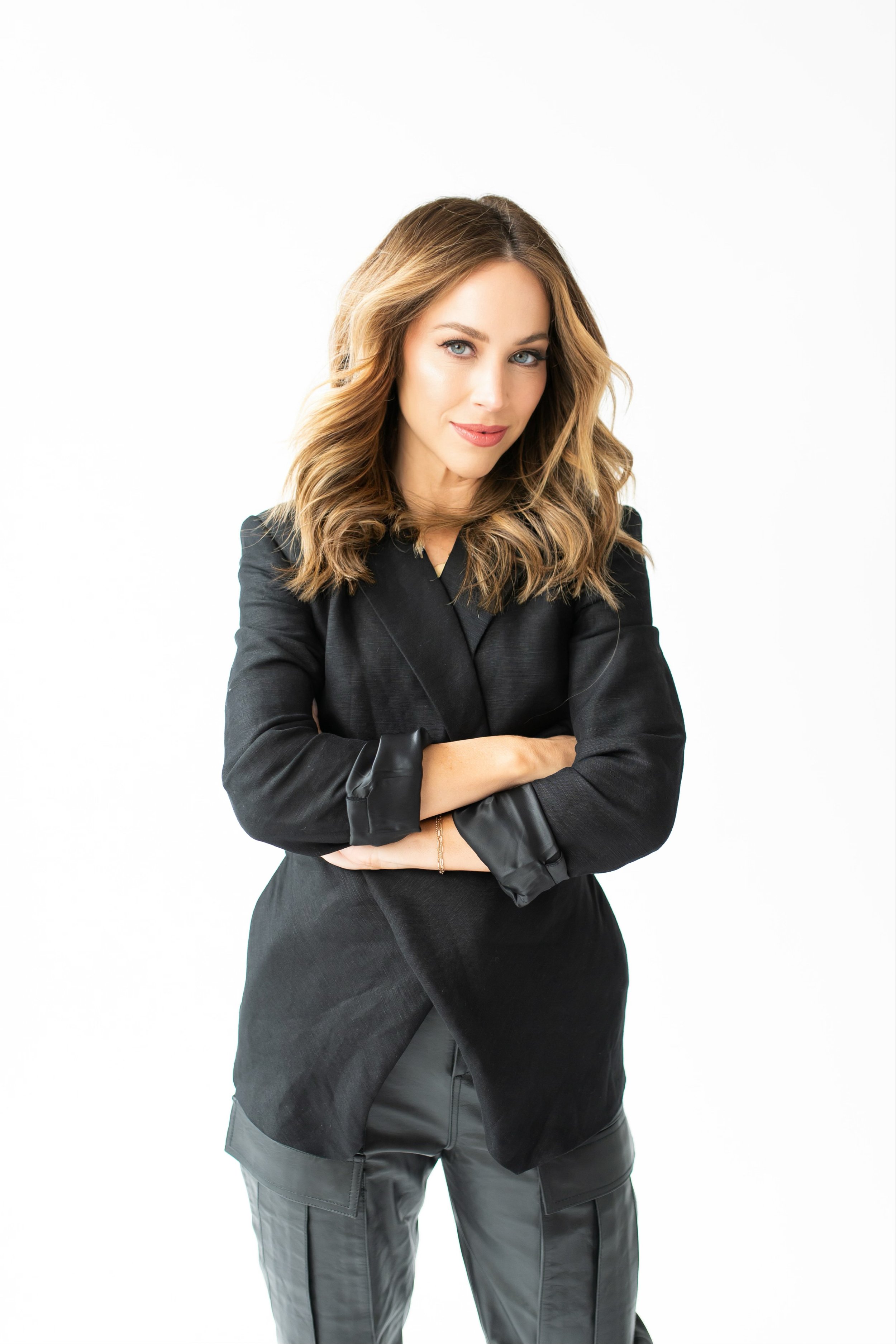3 Signs It’s Time to Take Something Off of Your Résumé
Yes, you read that right.
Photo: ColorJoy Stock
When I hosted a mentor session for Create & Cultivate Insiders, I got a lot of questions about résumé format and career path, but one question that stood out to me was, “When is it time to take something off of your résumé?” This is a great question because the answer depends on your experience and the goal of your résumé.
With that said, there are a few guidelines you should follow to help you see the signs that it’s time to take something off of your résumé. A common misconception is that you should include your whole career path on your résumé. While this is true for some people, most people should include some adjusted versions of their career path on their résumé.
Today, I want to discuss when to take something off of your résumé.
Take it off if… It doesn’t serve a purpose.
If you’re pondering the question, “When is it time to take something off of your résumé?” consider the fact that you only have a set amount of space to craft the perfect snapshot of your career. Everything on your résumé should serve a purpose.
Is an experience listed on your résumé to camouflage an employment gap?
Is an experience listed on your résumé to highlight your experience in a particular field or specialty?
Is an experience listed on your résumé because you want to show that you have experience in a specific role?
Is an experience listed on your résumé because the company name holds influential power?
Every piece of information included should serve a purpose. If it does not, it’s time to remove it from your résumé.
Take it off if… It was in a different lifetime.
Depending on the person and situation, I typically recommend including about 10-20 years of experience on a résumé. Including information that’s older than that is often not worth it. There are exceptions to this if the experience serves a purpose, (i.e. it shows a notable company, client, or role), however, most of the time you don’t need to go back that far.
If you have a lot of great experience that was a few decades ago, you can save those anecdotes to use during your interview.
“If it doesn’t serve a purpose—or was from a different lifetime—it’s probably time to take it off.”
—Michele Lando, founder of Write Styles
Take it off if… It makes you seem less experienced or too experienced.
Some experiences may have been very valuable and may have even been a turning point in your life/career, but they might work against you. Great examples of experiences that are important but not important for your résumé when you have an established career are college classes or internships. Note that these are not important to include if you have an established career.
If you are currently in school or just out of school searching for your first job, college classes or class projects are a great way to bolster your résumé and highlight your industry knowledge. However, if you do have an established career, they will often make you appear less experienced.
Unless you’re currently in college or recently graduated (looking for your first job out of college) there is no need to include information about the classes you took in school. Once you’ve made it past your first or second entry-level job, employers care more about what you’ve accomplished at work than what you learned in a classroom. Education is important, but on-the-job experience always takes precedence.
On that same note, it’s important to consider if a role makes you appear too experienced for the position you’re applying to. If you’re trying to shift careers or maybe take a lower-level position because of location, it’s important to be conscious of what information can make you appear too experienced for the job. If a potential employer feels that you’re overqualified for the job, they may fear that you’ll get bored easily which could equate to you inadequately completing required tasks or leaving a role quickly which would increase turnover.
Ultimately, every piece of information you include on your résumé should serve a purpose. It may be tempting to include everything to show your entire career path and/or versatility, but it’s important to consider the question of when is it time to take something off of your résumé. If it doesn’t serve a purpose or was from a different lifetime, it’s probably time to take it off.
About the Author: Michele Lando is a certified professional résumé writer, personal branding expert, and founder of Write Styles. She has a passion for helping others present the best version of themselves both on paper and in person, and works to polish individuals' application package and personal style. Aiming to help create a perfect personal branding package, Write Styles provides resources to enhance your résumé, professional appearance, and boost your confidence. Michele strives to help others gain the confidence to put their best foot forward in a personal and professional light.
Love this story? Pin the below graphic to your Pinterest board.
This story was originally published on October 30, 2019, and has since been updated.
MORE ON THE BLOG
Your Complete Checklist to Writing a Résumé From Scratch
Your next career move starts here.
Photo: ColorJoy Stock by Christina Jones Photography
Writing a résumé is hard, and it’s often something that’s not taught in school, so consider this your crash course in how to write a résumé that will land you the job.
Now, first things first. Before you start listing your qualifications, it’s important to know what you want to gain from your résumé. What are you going to use it for? Will you be applying to higher education programs, internships, or jobs? If you’re already in the workforce, do you want to stay on the same career path or do you want to transition into something different?
Your résumé will differ greatly depending on your answers to these questions, so it’s crucial to go through this exercise before getting started. Next, you’ll want to gather your information. So let’s get started.
Contact Information
When you’re figuring out what information to include on a résumé, start with the basics. You should always create a header with your contact information. Make sure you include the following:
Phone number
Email address
Location (Just include your city and state; no need to write down your exact address.)
Website if applicable (Note this is NOT your LinkedIn profile. If you’re using LinkedIn correctly, you will be easily searchable, so there’s no need to include the direct link on your résumé.)
Headlining Statement
A headlining statement is a crucial part of a résumé. It takes the place of what once was an “objective” but is much more effective. Think of a headlining statement as a snapshot of your career. It’s a quick two to three sentence maximum statement about who you are, what you do, and what value you bring as a candidate.
Skills Matrix
Putting your skills toward the top of the document immediately increases the effectiveness of your résumé. Recruiters look at a résumé for approximately six seconds. That means you have mere moments to show that you are qualified and demonstrate what you bring to the table. When you put your skills matrix towards the top, this shows the reader exactly what you have to offer and highlights that you are qualified for the position right off the bat.
The faster you can grab someone’s attention and persuade them you’re the right candidate for the position, the more likely you’ll be to get past the initial influx of applicants.
Employment Information
Depending on what stage you’re at in your career, you might not have traditional employment information. If you do have traditional work experience, gather your dates of employment, (month and year) job description, projects you worked on, and any additional information you can include like how many people you managed.
If you are in school or are just starting out in your career, you’ll want to include volunteer work and/or internship information. If you need to add even more relevant industry experience, include information about relevant school projects you worked on. This will help highlight your ability to work on a given project under constraints and will help highlight your relevant industry knowledge.
If you are listing class projects on your résumé, use the school name in place of the company name, and include something along the lines of “[Class Title] Project Manager,” “Student Project Manager,” or “[Class Title] Student” in place of a job title.
Specific Metrics and Achievements for Each Role
The key to a great résumé is highlighting exactly what you’ve achieved and what you can bring to a new role. This is not the place to include a general job description that can be used for anyone with that job title. Include specific information about what you did, how many people you worked with or managed, projects you worked on, and project results to ensure that your résumé immediately reflects your achievements and what you can bring to the table.
Anyone can say that they’re great at their job, but very few people can actually show it. When you’re noting your achievements, think about how you can quantify what you’ve done.
Education Information
Unless it is your highest level of education or you are in your first year of college, do not include information about your high school diploma. Similarly, there is no need to include GPA unless you’re currently in school and have a very high GPA (3.8 or above).
When it comes to listing education, start with the highest level of education at the top and list backward from there. For example:
PhD information
Master’s information
Bachelor’s information
High School information
Unless you are currently in school or are in a profession where your degree is a key factor, (i.e. medicine, law, etc.) your education should be listed at the bottom of your résumé. If you are in school or in one of the professions where your education is very important, your education will go towards the top under your skills list.
Certifications and Specialized Training
Including certifications and specialized training on your résumé make a huge difference in how impactful your document is. Even if you don’t have specific certifications but you’ve had internal training, taken an online course, or even just an online tutorial, include that on your résumé.
About the Author: Michele Lando is a certified professional résumé writer, personal branding expert, and founder of Write Styles. She has a passion for helping others present the best version of themselves both on paper and in person and works to polish individuals' application package and personal style. Aiming to help create a perfect personal branding package, Write Styles provides resources to enhance your résumé, professional appearance, and boost your confidence. Michele strives to help others gain the confidence to put their best foot forward in a personal and professional light.
This story was originally published on January 6, 2020, and has since been updated.
Love this story? Pin the below graphic to your Pinterest board.
MORE ON THE BLOG
Mentor Monday: 3 Things a Resume Expert Wants You to Know
Get a sneak-peek into our Insiders membership monthly perk.
Photo Courtesy of: Create & Cultivate
Did you know that Create & Cultivate has an Insiders membership program? There are SO many perks to being a member but one of our most popular is the monthly mentor sessions. These monthly digital videos give members some serious facetime with experts across various fields, and the opportunity to get personalized answers to all of their pressing business and career-oriented questions. Members can register for these informative live streams ahead of time and send their own questions to be answered in real-time.
Recently, professional resume writer and personal branding expert Michele Lando hosted a mentor session for our Insiders to answer all of their burning resume questions. As the founder of Write Styles—a provider for personal branding through curating clients’ resumes and self-confidence while navigating the workforce—Lando is very well-versed in the do’s and don’ts of resume drafting.
Here are three key takeaways from the mentor session to apply to your own resume today:
1. Less is More.
“You don’t want your document to be so over-the-top that someone doesn’t actually focus on the information.” In this portion of the Mentor Session, Michele Lando is referring to the design and layout of your resume. When it comes to color palettes or eye-catching graphics, Lando recommends double-checking that your design enhances the information, rather than taking away from the information. After all, you are promoting your own skills, not your aesthetic eye (unless you are applying for a graphic design position, in which case Lando says there are exceptions).
2. Your side hustle may be worth leaving off.
“Anytime you go to include anything on your resume … make sure it sticks within the focus you’re trying to highlight and the skillset that you’re trying to highlight.” Here, Lando honed in on tweaking your resume based upon the position you are applying for. For example, if your side hustle does not support any skills that could be useful to have for your potential new job, it may be better to just leave it off. Additionally, Lando points out that if you’re applying for a job that requires a large time commitment, it may be smarter to remove your side hustle because people may be concerned you do not have room in your schedule to take on another career.
3. Don’t be afraid to step into a new industry.
“Keep an open mind. When you’re trying to switch industries, I think the first thing to consider is that it’s not all-or-nothing. It is one step at a time.” If you’re trying to transition careers but feel like your lack of experience in that field is leaving you feeling less qualified against other candidates, Lando does not feel that this is a cause for serious concern. Instead, she recommends that you start taking informational classes so that you can display on your resume that you have at least a baseline understanding of what you are wanting to transition into. Also, she suggests using your current job to your advantage in the meantime. See what pockets of your current workspace you have yet to explore, and ask to sit in on projects, take on different roles, and try to explore other opportunities.
Be sure to sign up for our program sooner than later to hear who will lead the next mentor session! For more information on our membership program, check out our FAQs page.



















